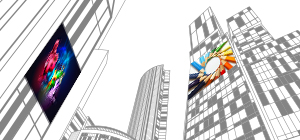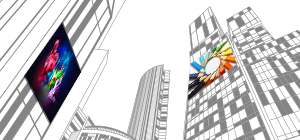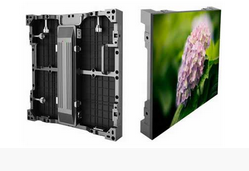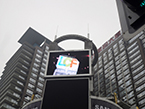Publisher: Supplier of LED Display Time: 2019-09-23 14:35 Views: 4449
The competition in the LED display industry is fierce. Industrial integration through mergers and acquisitions can often preempt the industry, strengthen its own competitiveness, and help companies occupy a larger market. In the past few years, the LED display industry has set off a number of mergers and acquisitions, and many companies have adopted a dual-main business or cross-field all-round development strategy. However, unlike previous years, the LED display industry has undergone significant changes since the beginning of this year. LED display companies no longer attack from multiple sides, but emphasize strengthening the development of the main LED display industry. A large part of this is due to trade The impact of the global economic downturn and other factors such as the involvement of other display technology companies has also exacerbated the sense of crisis of LED display companies. Companies no longer advance aggressively, but turn to strategic "shrinkage", but overall industrial integration has not stopped. On the contrary, new trends are also emerging, and corresponding changes are taking place in LED technology, product forms, and business models.
1. The choice of LED display technology route: The development of LED display from early single and double color to full color is an improvement, and from in-line to surface mount is a technological leap. In order to make LED display screens have better picture quality and better meet market demand, LED display screen companies continue to explore and improve technology and technology. The emergence of small-pitch products allows Chinese LED display companies to lead the development trend of the industry and has the meaning of a wind vane. It allows LED displays to quickly enter the commercial display field. With the continuous advancement of technology, the future may also go to the general market.
In the current industry, in order to solve a series of problems caused by the ever-decreasing LED display pitch, LED display companies are trying different technical solutions, and various technical routes have been tried, such as flip-chip COB, GOB and "4-in-1" "The application of SMD technology. COB technology has high requirements on the funds and technology of display companies, coupled with its uneven ink color, difficult maintenance and other issues that cannot be solved for a while, resulting in COB generally not being good-looking, and its development in the industry is relatively slow until * In the past two years, the development of small-pitch SMD has encountered bottlenecks. COB has attracted more and more attention because of its technical characteristics, making it easier to achieve dot pitches below 1.0. More and more display companies have begun to choose COB, and their camp is constantly growing. Develop and grow. GOB technology uses special materials and processes to perform surface encapsulation treatment on conventional SMD display modules to enhance the weather resistance and bump resistance of small-pitch products. The "4-in-1" display product is the smart innovation of Chinese LED display companies. Based on SMD, it creatively encapsulates four pixels in one lamp bead, in order to solve the protection of conventional SMD small spacing. The problem has achieved a breakthrough. Because the "4 in 1" inherits the core assets and technical advantages of downstream manufacturers in the surface mount process, and does not have to transfer the dominant power, it has been sought after by many display manufacturers as soon as it appeared, and there are related application cases.
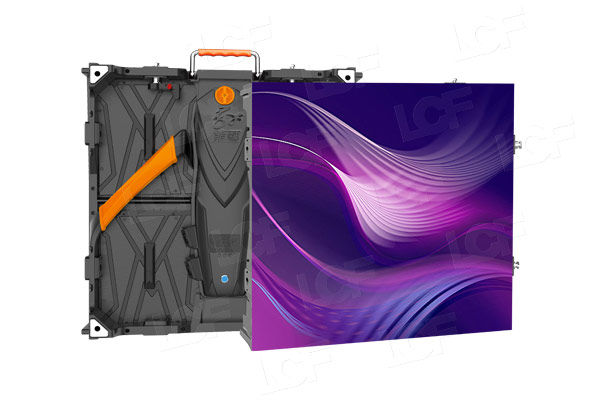
The development of different LED display technologies is, in the final analysis, to meet market demand. The rapid development of small-pitch LED displays is undoubtedly the result of the joint promotion of Chinese LED display companies. However, as the dot pitch of LED display screens develops towards fine pitch, market applications continue to expand and competition becomes more fierce. With international display giants such as Samsung, Sony, Barco, etc., working hard in the high-end display market, the future technological competition of domestic LED display companies will become more intense.
2. The vertical integration of the LED display industry: In a sense, fierce competition is a good thing. Only competition can promote the continuous progress of LED display technology and promote the upgrading of the industry. Compared with the traditional DLP and LCD display markets, the market size of LED displays is really insignificant and cannot be captured by the traditional display giants. However, this situation is currently quietly changing.
The penetration of small-pitch LED displays in the high-end display field has also made DLP, LCD and other traditional display manufacturers feel the pressure. They have also seen the opportunities in LED products, and they have begun to enter the LED display field. At major domestic and overseas exhibitions, some DLP and LCD companies have begun to exhibit LED display products, and what they are aiming at is the small pitch.
DLP or LCD companies quickly entered the industry through the acquisition and integration of LED display companies, and used their brand influence and existing market position to put pressure on LED display companies. Integration through mergers and acquisitions is an effective way for companies to achieve full coverage of the display industry. Nowadays, seeing the application market of LED display continues to grow and develop, the development prospects are promising. It is not surprising that traditional DLP and LCD display companies flood into the LED industry and LED display companies grab the cake.
It is particularly noteworthy that LCD companies and LED display companies have a significant difference. Traditional display companies generally implement operations based on applications, scenarios, and projects, while LED displays are often placed in the form of "single products". Among the projects, this is why there is no shortage of LED display companies in the industry that are OEMs for DLP and LCD companies. Compared with traditional display brand manufacturers, most LED display companies obviously lack system integration capabilities. Many of our LED display companies are just providers of LED display application products and do not have the ability to integrate audio-visual technology, let alone cross-field and cross-industry large-scale integrated solutions. In other words, many of our companies are just manufacturers of LED displays, and the added value of their products is low, and they have not been fully explored. If LED display companies want to truly realize the transition from selling products to providing solutions, there is still a long way to go. Of course, in this process, we are also very pleased to see the efforts of enterprises in the industry. For example, some companies have tried to integrate lighting on the cabinet for rental screens. This approach may not be the best Plan, but at least a positive attempt. At present, there are not many companies in the industry that have comprehensive audio-visual integration capabilities. After all, only companies with integration capabilities can easily move beyond a single product category and move closer to comprehensive solutions.
From the cross-border development of LED displays to the vertical integration of other display companies, the display industry will likely form an intertwined situation in the future, and it will become a new trend for companies to achieve full coverage of display products. Under this trend, the LED display industry is bound to usher in a new round of reshuffle in the future, and the pattern of the LED display industry may change.
3. The role of LED display companies: the same LED display companies, different corporate positioning, business models are different. As LED display products are mainly based on module splicing, some companies simply carry out module wholesale business, while others focus on production, but no matter which type, they are always inseparable from products. It is true that as part of the manufacturing industry, LED displays are naturally inseparable from products. Focusing on products and providing customers with high-quality products is also the fundamental way for companies to survive. Therefore, LED display companies generally focus on selling products. However, with the increasingly fierce competition in the industry and the further integration of the industry, whether this business model that relies on a single product can still meet the needs of future development will be increasingly tested by the market.
In fact, some LED display companies have begun to gradually realize the role change, and are shifting from selling a single product to a comprehensive overall solution. This kind of comprehensive solution is not limited to the completion of a certain project, but integrates all resources, from product development to production, to after-sales service, etc. to provide customers with the best solutions.
In the future, as more and more traditional DLP and LCD display manufacturers intervene in the LED display business, it will undoubtedly have a major impact on the current competitive situation of the LED display industry, and the challenges that LED display companies will encounter will be more severe. . After all, compared with the old traditional display companies, LED display companies are basically "grassroots" starting. Although the industry has grown rapidly in recent years, the companies have also actively gone overseas and obtained the world's largest LED display manufacturing base. Status, but behind this huge volume, Chinese LED display companies are still very young, unable to compete with traditional DLP and LCD companies in terms of brand influence and market dominance.
Once established companies step in, they will take advantage of their original brands and use their inherent customer base to easily open up the market. This will pose a threat to LED display companies that are currently developing and accumulating. In this case, LED display companies can only abandon a single product sales business model, and only in this way can they occupy a place in the future competition. Otherwise, the company will not escape being acquired, or become a complete foundry company, or even become a victim in a new round of reshuffle.
